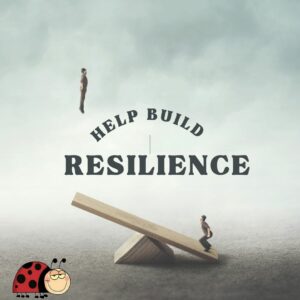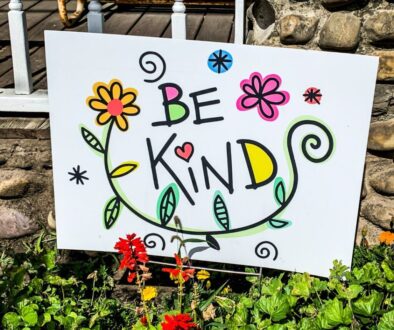Help Build Resilience in Others: Be a People Booster

Before we can attempt to help build resilience in others, we need to understand the concept. Resilience is the ability or capacity to cope with, or recover from, change, adversity, mistakes, and sometimes poor behavior. It is like a rubber band. Both are about being stretched and returning to their original condition or even improved.
Resilience involves the capacity to adapt to changing circumstances and the ability to bounce back; bounce back from adversity, returning to center or a sense of being grounded after being stretched. After being stretched, a rubber band can quickly return to its initial state, ready to be used again.
People with a strong resiliency muscle recover from difficulties and renew their efforts, often emerging stronger and more capable than before. They can face multiple problems while maintaining their capacity to recover and thrive despite repeated challenges. Here are some ways we can help others build resilience.
-
Be a Resilient Role Model!
As the physicist, Albert Einstein said,
Setting an example is not the main means of influencing others; it is the only means.”
Being a resilient role model involves demonstrating resilience in our actions and words. This includes maintaining a positive outlook, showing adaptability, and being a source of support for others. When you embody resilience, you inspire those around you to cultivate their own resilience.
-
Define the Problem
Clearly identifying a problem is the first step to a solution. Understanding both internal and personal problems and external and environmental problems can help in finding effective solutions. Consider what internal or external problems are being faced. Help your person identify:
- What the problem is.
- Who has responsibility for the problem.
- Who has the power to change it or if it merely needs to be accepted.
Internal/Personal Problems:
- Poor coping skills
- Pessimistic perspective
- Overwhelming feelings – fear, anger, grief, loneliness, etc.
- Stuck in the role of rescuer and/or victim
- Denial of problem
- Other issues as identified
External/Environmental Problems:
- Work & home-related stress
- Lack of acknowledgment
- Lack of control (workload)
- Emotional or verbal abuse
- Denial of problem
- Other issues as identified
-
Check Your Beliefs to Help Build Resilience
Life affirming and resiliency-based beliefs are key to developing resilience. Beliefs shape how we perceive and respond to challenges, ultimately influencing our ability to recover and thrive.
Challenge the dysfunctional or self-condemning beliefs your person says. Then encourage messages of being enough, capable and loveable.
Here are some key beliefs and how they might sound:
- Self-efficacy aides stress hardiness: “I become stronger as I handle each challenge.”
- Cautious optimism helps open possibilities: “I believe good things are possible.”
- Work (& Study) can be given meaning: “I know my efforts contribute to something valuable.”
- Life is full of ups & downs: “I expect change and adapt to it.”
- A support circle is key: “I help and am helped by my community.”
- I can choose to stop ‘playing’ blamer, rescuer or victim: “I am accountable for my actions.”
- I can find the gifts & opportunities in past struggles: “I am stronger, wiser, and more resilient when I learn from my experiences.”
-
Name, Encourage, and Build on Strengths
Martin Seligman, founder of the Positive Psychology movement wrote,
Building strength and virtue is not about learning, training, or conditioning, but about discovery, creation, and ownership.”
Help your person identify their strengths. Strengths are a combination of our talents, skills, and knowledge. There are hundreds of strength words including analytical, assertive, disciplined, friendly, kind, logical, organized, sense of humor, and trustworthy. Recognize and appreciate strengths in others by saying something like, “Thank you, for demonstrating kindness. You helped Joe feel included.”
You can access Martin Seligman’s 240 Via Signature Strengths questionnaire by clicking HERE.
And here is a 2.06-minute video to reinforce these ideas:
-
Use the Keys to Help Build Resilience
The resiliency trainer, Nan Henderson wrote,
The crucial foundation of a resiliency-building relationship is the resiliency attitude: ‘I see what is right with you. Your strengths are more powerful than your problems, and we will work together to find a way for your success’”.
Here is a check list of ideas to help build resilience in others.
- Role Model
- Speak and demonstrate resilience beliefs.
- Use skills to Return to Center.
- When appropriate, self-disclose.
- My role with you includes…
- Here is an idea…
- I will… I will not…
- Your situation reminds me of…
- Create Emotional Safety
- Listen with empathy and seek to understand.
- Welcome all emotions.
- It sounds like you’ve had a hard time this week.
- It is OK with me if you take a moment to think it over.
- I imagine you feel sad about that.
- Be Curious with Deepening Questions
- Identify the core problem.
- Name and build on strengths and resources.
- Use solution-focused language.
- What has gone well? How did you make that happen?
- What has not gone well?
- Was there a strength did you forget?
- Was there a worst that can happen? What is the best?
- Is it true? How do you know it is true?
- What if your thoughts were not true?
- Is it better to do something or do nothing?
- What are your options? What might happen?
- Acknowledge and Appreciate
- Deepen improvement, strengths, and successes.
- Acknowledge courage.
- I noticed you…
- I appreciate how…
- Thank you for courageously sharing with me.
- Celebrate
- Celebrate achievements with enthusiasm: “YEAH! High five!”
Consider these ideas to first strengthen your own resilience and then help build resilience in others. By implementing these strategies, you can create a supportive environment where resilience thrives.
Please check out these related posts:
- People Boost: How to Encourage Others’ Personal Strengths
- How to Boost Your Resilience: Assess Your Protective Factors
- Return to Center: Simple Strategies to Navigate Distress, Depression and Disconnection




